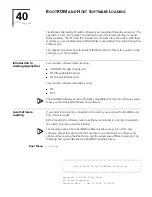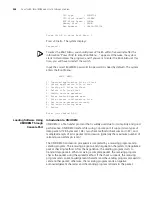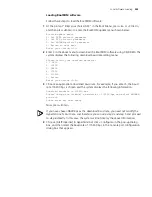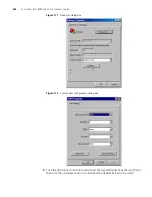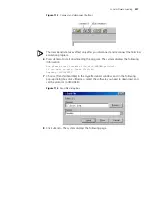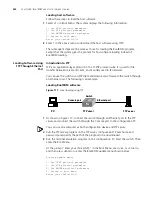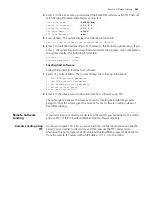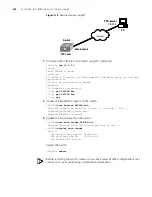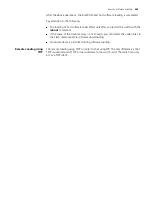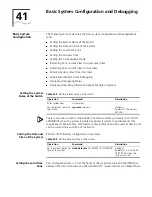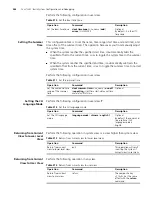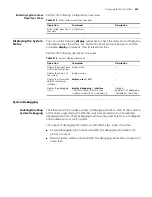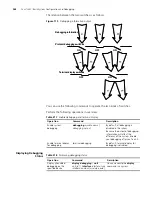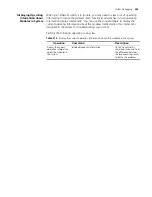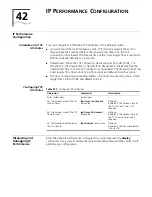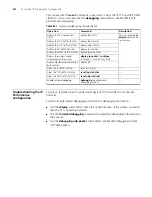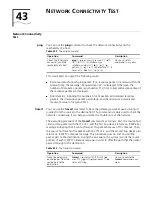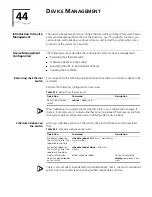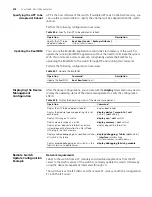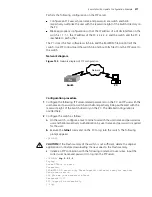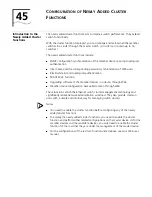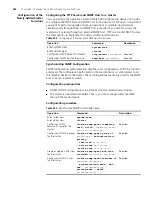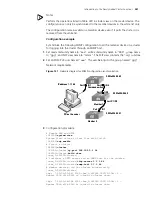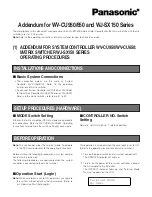
366
C
HAPTER
41: Basic System Configuration and Debugging
Perform the following configuration in user view.
Setting the Summer
Time
This configuration task is to set the name, time range (start time and end time), and
time offset of the summer timer. The operation here saves you from manually adjust
the system time.
■
When the system reaches the specified start time, it automatically adds the
specified offset to the current time, so as to toggle the system time to the summer
time.
■
When the system reaches the specified end time, it automatically subtracts the
specified offset from the current time, so as to toggle the summer time to normal
system time.
Perform the following configuration in user view.
Setting the CLI
Language Mode
Perform the following configuration in user view.
T
Returning from Current
View to Lower Level
View
Perform the following operation in system view or a view higher than system view.
Returning from Current
View to User View
Perform the following operation in any view.
Table 310
Set the local time zone
Operation
Command
Description
Set the local time zone
clock timezone
zone-name
{
add
|
minus
}
HH:MM:SS
Optional
By default, it is the UTC
time zone.
Table 311
Set the summer time
Operation
Command
Description
Set the name and time
range of the summer
time
clock summer-time
zone_name
{
one-off
|
repeating
}
start-time start-date end-time
end-date offset-time
Optional
Table 312
Set the CLI language mode
Operation
Command
Description
Set the CLI language
mode
language-mode
{
chinese
|
english }
Optional
By default, the command
line interface (CLI)
language mode is
English.
Table 313
Return from current view to lower level view
Operation
Command
Description
Return from current
view to lower level view
quit
This operation will result
in exiting the system if
current view is user view.
Table 314
Return from current view to user view
Operation
Command
Description
Return from current
view to user view
return
The composite key
<Ctrl+Z> has the same
effect with the
return
command.
Summary of Contents for 4200G 12-Port
Page 10: ...8 CONTENTS...
Page 14: ...4 ABOUT THIS GUIDE...
Page 46: ...32 CHAPTER 5 LOGGING IN THROUGH WEB BASED NETWORK MANAGEMENT SYSTEM...
Page 48: ...34 CHAPTER 6 LOGGING IN THROUGH NMS...
Page 60: ...46 CHAPTER 9 VLAN CONFIGURATION...
Page 64: ...50 CHAPTER 10 MANAGEMENT VLAN CONFIGURATION...
Page 80: ...66 CHAPTER 13 GVRP CONFIGURATION...
Page 98: ...84 CHAPTER 15 LINK AGGREGATION CONFIGURATION...
Page 112: ...98 CHAPTER 18 MAC ADDRESS TABLE MANAGEMENT...
Page 126: ...112 CHAPTER 19 LOGGING IN THROUGH TELNET...
Page 162: ...148 CHAPTER 20 MSTP CONFIGURATION...
Page 274: ...260 CHAPTER 29 IGMP SNOOPING CONFIGURATION...
Page 276: ...262 CHAPTER 30 ROUTING PORT JOIN TO MULTICAST GROUP CONFIGURATION...
Page 298: ...284 CHAPTER 33 SNMP CONFIGURATION...
Page 304: ...290 CHAPTER 34 RMON CONFIGURATION...
Page 338: ...324 CHAPTER 36 SSH TERMINAL SERVICES...
Page 356: ...342 CHAPTER 38 FTP AND TFTP CONFIGURATION...
Page 365: ...Information Center Configuration Example 351 S4200G terminal logging...
Page 366: ...352 CHAPTER 39 INFORMATION CENTER...
Page 378: ...364 CHAPTER 40 BOOTROM AND HOST SOFTWARE LOADING...
Page 384: ...370 CHAPTER 41 Basic System Configuration and Debugging...
Page 388: ...374 CHAPTER 43 NETWORK CONNECTIVITY TEST...
Page 406: ...392 CHAPTER 45 CONFIGURATION OF NEWLY ADDED CLUSTER FUNCTIONS...


